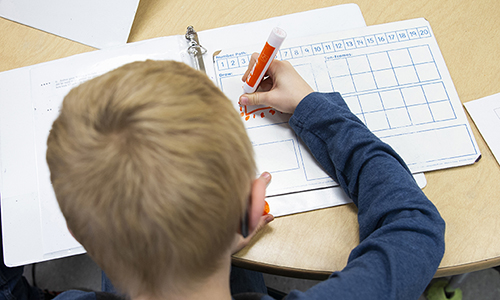

Understanding differential growth during school years and summers for students in special education
New research examining academic achievement and growth of students in special education and their peers who were never in special education during each school year and summer in grades K-4 shows that students with disabilities grow as much or more academically during the school year than their peers without disabilities during some years, but that steeper summer learning losses for students with disabilities contribute to widening disparities.
By: Angela Johnson, Elizabeth Barker
Topics: Equity, Growth modeling, Seasonal learning patterns & summer loss


Understanding differential growth during school years and summers for students in special education
This study compares within- and across-years academic growth for students who were ever in special education (ever-SPED) to students who were never in special education (never-SPED) in grades K-4. Ever-SPED students grew more in math and reading than never-SPED students during many school years, but lost more learning during every summer than their peers, leading to expanding disparities. These findings suggest that summer learning opportunities are crucial for improving educational outcomes for students with disabilities.
By: Angela Johnson, Elizabeth Barker
Topics: Equity, Growth modeling, Seasonal learning patterns & summer loss


User guide for interpreting the NWEA state dashboard: Exploring the educational impacts of COVID-19
This guide explains the analyses, statistics, terms, and data included in the NWEA state dashboard, Exploring the Educational Impacts of COVID-19.
By: Greg King
Topics: COVID-19 & schools, Innovations in reporting & assessment


A comparison of item parameter estimates in Pychometrik and the existing item calibration tool
This study evaluates the performance of Pychometrik, a new item calibration tool, against the existing tool for MAP Growth.
By: Wei He, Patrick Meyer, Russ Grandgeorge, Emily Bo
Topics: Item response theory


A semi-supervised learning-based diagnostic classification method using artificial neural networks
This research study is the first time of applying the thinking of semi-supervised learning into CDM. Also, we used the validating test to choose the appropriate parameters for the ANNs instead of using typical statistical criteria, such as AIC, BIC.
By: Kang Xue, Laine Bradshaw
Topics: Measurement & scaling


The report documents the process NWEA followed to determine and validate the cut scores for fall, winter, and spring that can be used to identify students in Grades K–8 who have severe learning difficulties and need intensive intervention in reading and mathematics.
By: Wei He, Patrick Meyer
Products: MAP Growth
Topics: Guidance


Arguing about the effectiveness of assessments for the classroom
Approaches to test score use and test purpose lack the well-developed methodological guidelines and established sources of evidence available for intended score interpretation. We argue in this paper that this lack fails to reflect the ultimate purpose of a test score—to help solve an important problem faced by intended test users.
By: Garron Gianopulos


